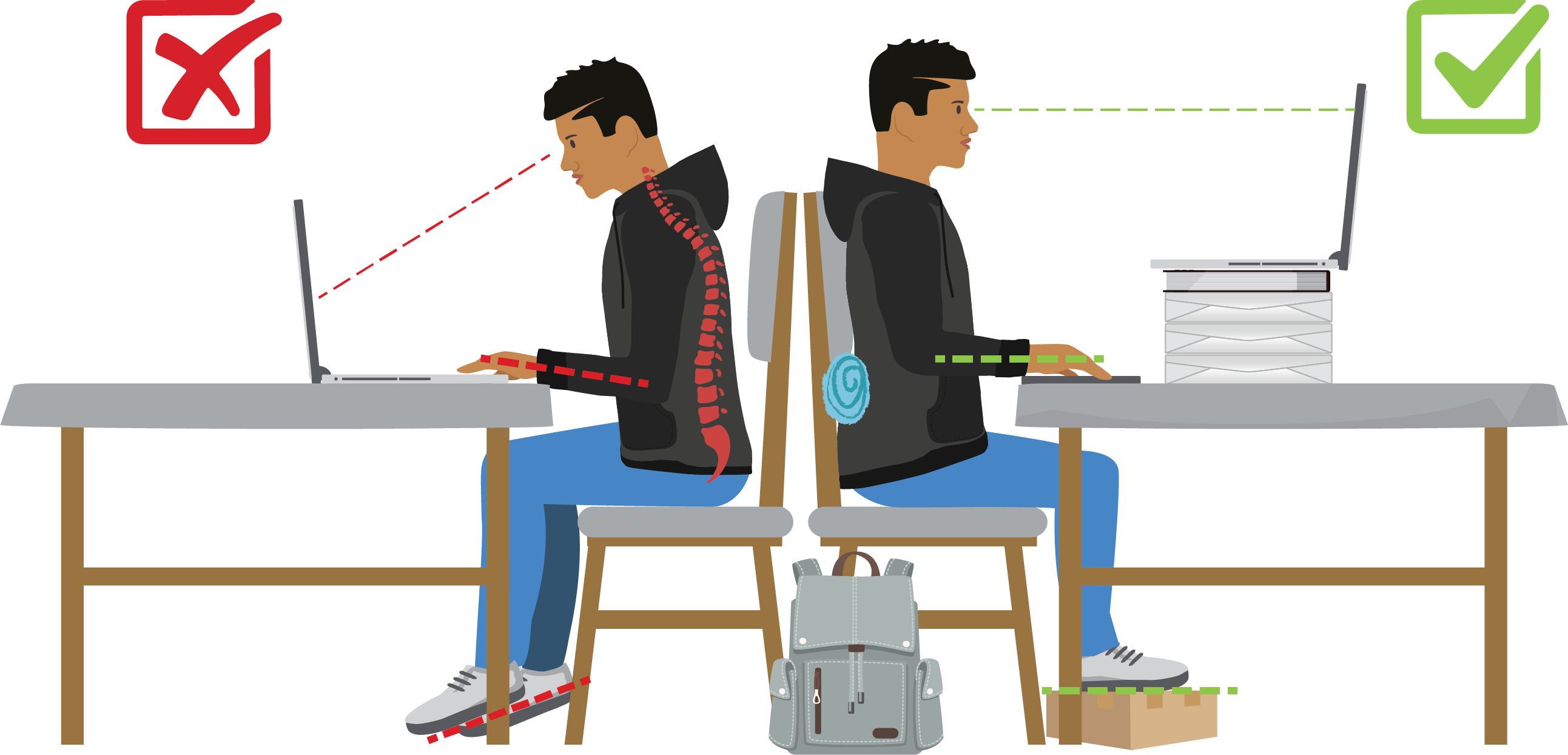Calling all safety professionals, claims managers, HR representatives, and anyone else who cares about the safety of your company’s most valuable assets – the employees!
As the end of 2022 rapidly approaches, it’s time to start looking ahead to the top safety trends for 2023. Safety in the workplace has always been paramount, however, with added stressors in the world like the lingering effects of the ongoing COVID pandemic, a global recession, skyrocketing inflation, political turmoil, and more, it’s more important than ever.

The term “safety” gets tossed around a lot and the tendency is to immediately associate it with the prevention of big, nasty, scary injuries or worse. While preventing extreme incidents is certainly the top priority when considering work-related injury prevention, there is also an abundance of “under the radar” working conditions and practices that can really devastate employees' physical, mental, and emotional health as well as a business’s bottom line. These need to be prioritized as well when considering your 2023 safety and work-related injury prevention plans.
Below, we will outline and provide actionable tips for the following top 2023 safety trends:
#1 Extended or Irregular Working Hours, Worker Fatigue, Rushing, and Overuse Injuries
This may seem like several different trends, and while that may be true, all of these are intertwined and work together to create a perfect storm of safety issues.
Due to staffing challenges such as increased turnover, vaccine mandates, the increasingly difficult task of retaining high performers, and the rise in popularity of workers “quiet quitting”, employees that do stick around are expected to pick up the slack. This means longer working hours, extended or irregular shifts, rushing on the job, and ultimately fatigue and burnout. According to the Bureau of Labor Statistics, the so-called quits rate, which measures voluntary job leavers as a share of total employment, was 2.7 percent for the third month in a row in September of 2022. This is down slightly, but still near the record highs of 3.0 percent seen at the end of 2021.
Workers who are conditioned for 8-hour days are suddenly expected to work 12+ hour days regularly. This can result in an increased number of both chronic and acute overuse-related musculoskeletal injuries. The most common of which being sprains and strains.
Common Work-Related Injuries Associated with Fatigue, Overuse, and Rushing
The human body can only withstand so much stress before it begins to break down. Conditions like tendinitis, neuropathy, and other muscle-related issues exacerbated by inflammation are extremely common when someone begins to work beyond their normal level of conditioning for an extended period of time.
In addition to slow-developing chronic issues, being fatigued while on the job can prove to be extremely dangerous. Fatigue often results in the impaired ability to think clearly, restlessness, anxiety, and other symptoms that don’t mesh well with jobs that require focus or precision, heavy machinery, hazardous working conditions, or other common safety risks.
In a similar fashion, even if workers aren’t necessarily “fatigued”, increasing output demands on those employees can lead to rushed task completion. Hitting timed quotas, having rigid completion deadlines, and continually pushing those limits to “increase productivity” can have the opposite effect. This mentality may show short-term improvements in whichever metrics are being analyzed, however, it leads to rushing, carelessness, and a decreased attention to detail, or as I like to call it, the “Danger Triad.” While pushing employees to be faster and faster may be the “quickest” way to get a job done, it’s also the quickest way to get somebody hurt.
How to Overcome Long Work Hours, Extended or Irregular Shifts, Worker Fatigue, and Overuse Injuries
- Manage Expectations
The first and most actionable step towards work-related injury prevention is to manage your expectations of employees and what they should be reasonably expected to accomplish given less-than-ideal circumstances that are oftentimes out of their control.
- Injury Prevention Techniques and Overall Wellness
When extended working hours and increased output is necessary for the survival of the business, or your survival in the business, it’s important to remind workers that they need to take care of their bodies, or they will fall victim to repetitive stress injuries. This can be accomplished in several ways including:
- Pre-and mid-shift warm-up stretches
- Educating on and practicing safe body mechanics
- Work in ergonomically correct positions
- Encourage recovery with sleep
- Proper hydration and nutrients
All these tips will increase the effectiveness of your work-related injury prevention efforts. Here is a free Briotix Health resource for you to download and distribute to your teams with tips on how to reduce the frequency and severity of repetitive stress injuries.
- Slow Down and Pay Attention
Additionally, it’s important for employees (and anyone who oversees their “productivity”) to remember that taking a few extra seconds to focus and do a job safely could be the difference between completing a task safely and suffering an injury. It should go without saying that productivity will certainly be decreased if the employee suffers an injury and the subsequent OSHA recordable incidents, increased workers' compensation claims, overpriced group medical costs, and needless work restrictions.
Click the button below for a free Briotix Health resource that you can download and distribute to your team with some helpful reminders about the dangers of being in a rush.

- Establish Best Practices with Early Symptom Intervention
Lastly, encouraging open lines of communication and early symptom intervention (ESI) can be critical in catching issues in the early stages. Early symptom identification increases the likelihood of positive outcomes because it can stop general fatigue and discomfort from evolving into pain and loss of function. Having an onsite expert such as a physical therapist or athletic trainer immersed in your workplace allows for another set of eyes and ears that can often identify issues even before the employee identifies them themselves. Once an ESI has been initiated, these embedded professionals are able to conservatively manage the discomfort with no additional care needed.

#2 Mental Health Disorders in the Workplace
According to the CDC, nearly 1 in 5 U.S. adults aged 18 or older (44.7 million people) have reported a mental illness. In addition, 71% of adults reported at least one symptom of stress, such as a headache or feeling overwhelmed or anxious. Given these statistics, it's important that mental health be an integral part of any workplace-injury prevention and safety program.
Common Mental Health Disorders in the Workplace and Business Effects
The most common mental health disorders in the workplace are anxiety and depression.
- Anxiety is characterized by the American Psychological Association as feelings of tension, worrisome thoughts, and physical bodily sensations such as sweating or increased heart rate.
- Depression is characterized by the U.S. Department of Health & Human Services as feeling sad, hopeless, and losing interest in one's normal activities, along with other physical and mental symptoms that last two weeks or longer.
Poor mental health and stress can negatively affect an employee’s job performance and productivity, engagement, satisfaction, communication with coworkers and management, physical capability, and daily functioning. These conditions are also tied to increased rates of disability and unemployment. Research from the National Institute of Mental Health showed employees at high risk for depression had the highest healthcare costs during the three years after an initial health risk assessment.
What Causes Mental Health Problems in the Workplace?
The most common causes of mental health problems in the workplace are increased workloads which can result in home-life conflict, general health problems, and employee burnout. The Mental Health Foundation states, “The pressure of an increasingly demanding work culture is perhaps the biggest and most pressing challenge to the mental health of the general population.”
How to Support Employees with Mental Health Problems in the Workplace
It’s important to consistently promote mental health awareness and any tools you have in place to support such conditions. These tools can include:
- Employee Assistance Programs (EAP)
- Social support networks
- Mental health screenings
- Healthy behavior incentive programs
Often, these benefits are reviewed in the hiring process but rarely discussed after. Many employees may not have any idea what resources are available to them, but continuous explanations of these benefits can serve as a helpful reminder when they are needed the most.
Supervisors, managers, and executives need to make a conscious effort to destigmatize open and honest discussions regarding mental health. An investment into your employees' well-being by listening, being supportive, and offering resources will pay dividends in their ability to cope, function, and contribute.
 .
.
Actionable Tips for Reducing the Effects of Mental Health Illness in the Workplace
There are many creative ways to reduce the occurrence and severity of mental illness in the workplace. Many times it’s as simple as being supportive, however, here are recommendations from the CDC for addressing mental health within the workplace:
- Create a “quiet space” free of wifi, screens, and noise to give employees a place to go and reset their bodies and minds when on break.
- Do regular surveys that measure an employee’s “Mental Wellness Score” so you can track progress and identify regressions among your workforce early and make necessary adjustments.
- Extend EAP benefits to employees’ families and anyone else who may be living in their homes.
- Offer access to Behavioral Health Accommodations Specialists, including clinical psychologists, social workers, physical and occupational therapists, and other allied health professionals as part of core treatment teams to provide comprehensive, holistic care. These professionals are trained in sophisticated approaches to deal with these concerns in ways to which untrained professionals are not accustomed.
Click the button below to download this free Briotix Health resource for managing stress.

#3 Home Office Ergonomics for Remote Workers
According to a survey conducted by Owl Labs, during the COVID-19 pandemic, close to 70% of full-time workers began working from home. After the pandemic, 92% of people surveyed expected to work from home at least 1 day per week, and 80% expected to work at least 3 days from home per week.
While research suggests this is a positive thing in the minds of most employees and employers alike, it presents some issues in the short- and long term as employees are ditching their ergonomically friendly chairs and office setups for their couches and kitchen tables.
Ergonomic Risk Factors in a Home Office
Employees who do not prioritize proper ergonomic setups at home will be exposed to the same detrimental effects as they would be in an office without a proper setup, however, a home office is even more difficult for employers to monitor. This can lead to a wrench in your workplace-injury prevention program.
Every home office setup is different, so the risk factors will be unique to each person, however, common concerns may be prolonged sitting on a couch or chair without adequate lumbar support.
Poor lumbar support can lead to:
- Chronic low back pain
- Muscle tension in the neck and shoulders
- Neurological issues due to tight hamstrings
Consistent use of a laptop instead of a regular-sized computer monitor with a keyboard and mouse can cause:
- Next and shoulder pain due to a forward-leaning position
- Carpal tunnel
- Vision changes

Actionable Tips to Support Remote Employees with a Proper Ergonomic Office Setup
There are plenty of free ways to improve your home office setup. All that’s required is some creativity. Some examples of free solutions (or at least solutions you can achieve with common household items) include:
- Roll up a towel and place it behind your lower back to increase lumbar support
- Putting an old shoe box or block of wood under your feet to serve as a footrest if your feet don’t reach the floor
- Stack reams of paper or books under your laptop to raise it up to eye level
Click below to download a free home office ergonomics resource from Briotix Health that visualizes some of these concepts for you to print and distribute to your team.
 For adjustments that can’t be easily achieved with common household items, consider setting a budget for ergonomic equipment that you or your employee can purchase to improve their setup. You may incur some initial costs of equipment, however, it is an investment in preventing future discomforts and work-related injuries.
For adjustments that can’t be easily achieved with common household items, consider setting a budget for ergonomic equipment that you or your employee can purchase to improve their setup. You may incur some initial costs of equipment, however, it is an investment in preventing future discomforts and work-related injuries.
One way to ensure your at-home employees have an ergo-friendly working space is through virtual ergonomic assessments. During the virtual session, a certified ergonomist will do a complete review of the working area for ergonomic risk factors and provide step-by-step directions for creating an ergonomically correct space. This gives managers the peace of mind that any equipment purchased, or home remedies, will be effective and reduce the risk of injury.
Achieving Your 2023 Safety Goals
Addressing these, and other safety concerns within your work environment can help ensure you start 2023 off on the right foot. Being proactive allows companies to not only improve the health and safety of their workforce but also prevent unnecessary musculoskeletal injuries and claims.
Briotix Health's customizable service mix is built to help you reach your 2023 safety goals. Contact us to set up a time to discuss which of our solutions is the best fit for you and your team.
Wishing you a safe 2023 and beyond!




 .
.

 For adjustments that can’t be easily achieved with common household items, consider setting a budget for ergonomic equipment that you or your employee can purchase to improve their setup. You may incur some initial costs of equipment, however, it is an investment in preventing future discomforts and work-related injuries.
For adjustments that can’t be easily achieved with common household items, consider setting a budget for ergonomic equipment that you or your employee can purchase to improve their setup. You may incur some initial costs of equipment, however, it is an investment in preventing future discomforts and work-related injuries.